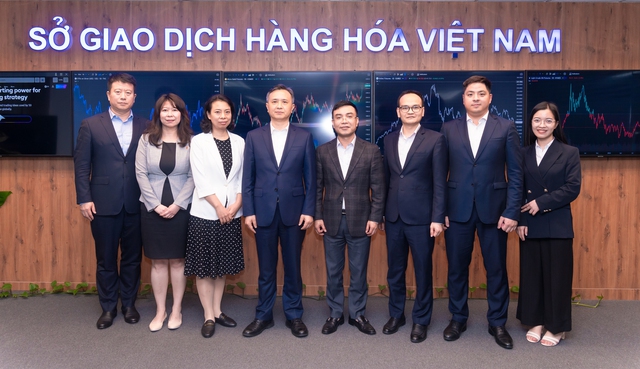Việt Nam and China Explore Comprehensive Commodity Exchange Cooperation to Boost Bilateral Trade

Hanoi, The Gulf Observer: Việt Nam and China are actively engaged in discussions to formulate a cooperation strategy for the development of a comprehensive commodity exchange, aimed at fostering trade between the two nations. During a productive working session held on March 6-7, representatives from Việt Nam’s Ministry of Industry and Trade, Mercantile Exchange of Việt Nam (MXV), Vietnam Maritime Corporation (VIMC), and Dalian Commodity Exchange (DCE) deliberated on the essential components of this collaborative effort.
Ran Hua, Chairman of DCE, emphasized the foundational role of a robust legal framework in ensuring the stable and sustainable development of the commodity market. Acknowledging the dynamic nature of market developments, Ran highlighted the importance of promptly adjusting policies to meet evolving needs.
DCE, established in 1993 and ranked among the three largest commodity markets in China and the top 10 globally, shared valuable insights and experiences on the development and management of a commodity exchange with the Vietnamese delegation. Ran expressed optimism about the significant potential for enhanced cooperation between DCE and MXV, contributing to the promotion of trade between the two countries.
During the two-day session, the Vietnamese Ministry of Industry and Trade announced its intention to develop a new decree, replacing decrees 158/2006/NĐ-CP and 51/2018/NĐ-CP, with the aim of improving the legal framework and fostering the development of the commodity market in Việt Nam.
Đặng Việt Hưng, General Director of MXV, outlined plans for developing specialized commodity exchanges tailored to Việt Nam’s product advantages. The initial focus will be on the development of exchanges for rubber and pork in Ho Chi Minh City.
Furthermore, discussions included plans for physical delivery services in Việt Nam, with both MXV and DCE affirming the essential role of physical delivery in the operational model of any commodities exchange to ensure smooth functioning.
As part of the working session, representatives from DCE, MXV, and VIMC visited Hải Phòng Port. Recognizing its advantageous geographical location and capacity to accommodate vessels of about 130,000 tonnes, Hải Phòng Port stands poised to develop logistics services and emerge as an international logistics hub.
This cooperative endeavor signifies a strategic step forward in enhancing economic ties and facilitating smoother trade transactions between Việt Nam and China.


